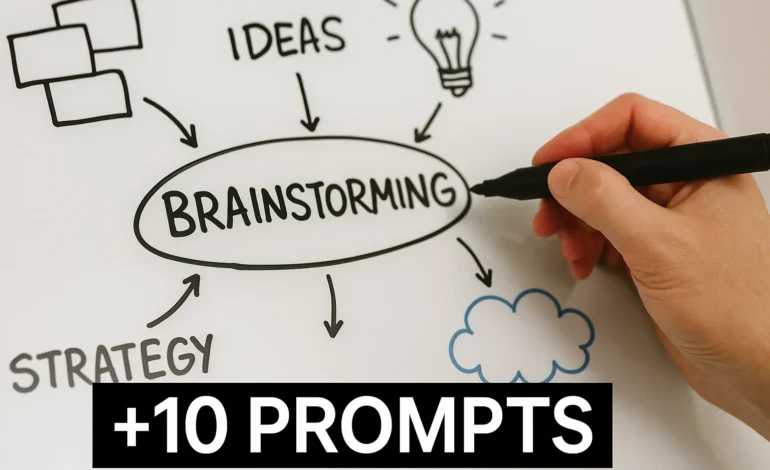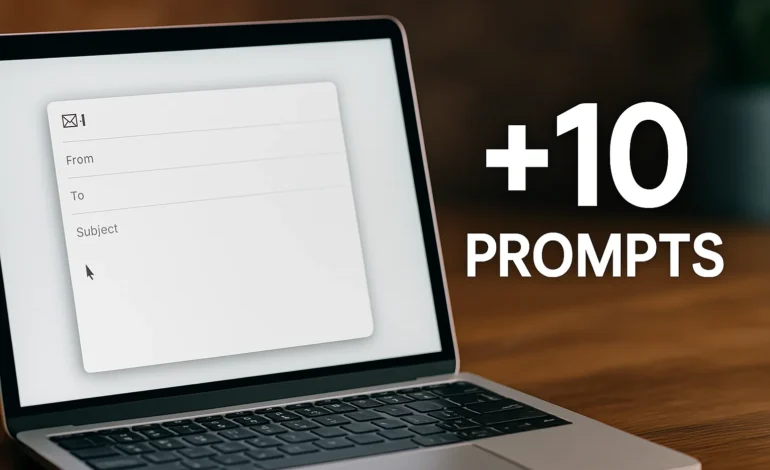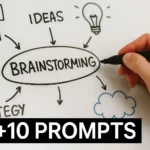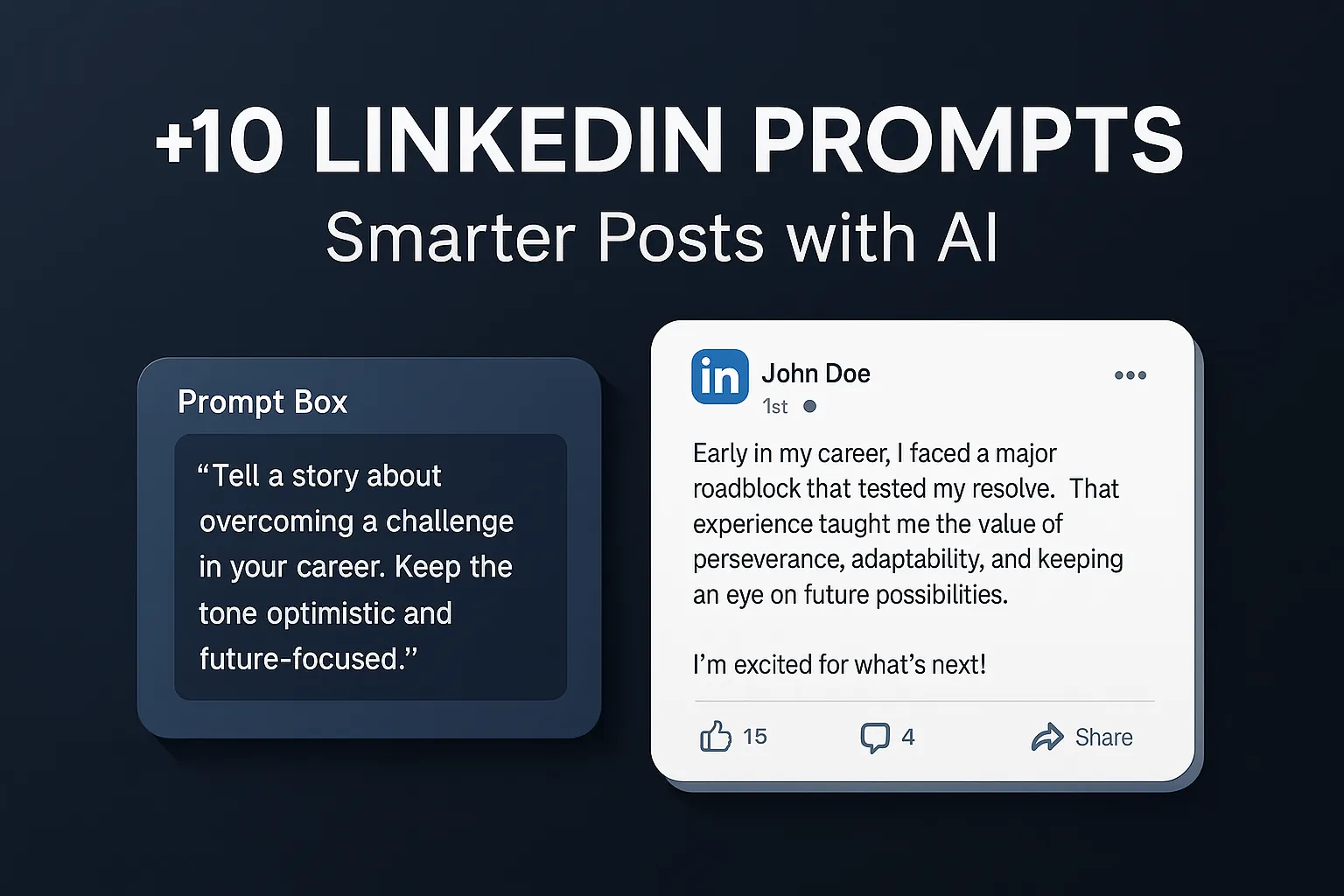
Brainstorming with AI: Better Ideas, Smarter Prompts
Good ideas rarely appear out of thin air—and bad ones usually come from bad input. When it comes to AI brainstorming, the biggest mistake is underprompting. If you ask ChatGPT to “give you ideas,” you’ll get exactly what that sounds like: generic lists, bland suggestions, and recycled startup pitches from five years ago.
The real magic happens when you treat AI not like a search engine, but like a co-creator. This guide shows you how to use strategic prompting to generate smarter, weirder, and more original ideas—especially when you feel stuck.
Use these prompts for product ideation, content hooks, naming exercises, or reframing tough creative blocks. They work across industries—and they scale with your specificity.
Prompt 1: “The Anti-Pitch”
Sometimes the best way to get to a good idea is by describing what you’d never pitch. This flips the creative process upside down and highlights your own blind spots.
Useful when everything you try feels too safe or bland. Reversing direction often exposes the real brief.
Describe the worst possible name for a mindfulness app for working parents. Now flip the concept and give me five names that avoid all those mistakes, while still being memorable.
Prompt 2: “Future Headlines”
Backcasting is powerful. Instead of generating ideas, ask what already worked—in the future. This frames ideation as narrative design.
Helps spark product angles with backstory, relevance, and momentum. Feels real, not abstract.
Write a 2029 Wired headline about a solo founder who disrupted hiring with an app nobody took seriously at launch. What did it do? What changed the market? Why did it succeed?
Prompt 3: “Industry Clash”
The best innovation often happens when two unrelated domains collide. This prompt forces contrast and cross-pollination.
Promotes originality through forced juxtaposition. Use this when you’re stuck in your own vertical.
Generate 3 product ideas that combine the personalization of Spotify with the daily rituals of skincare. Make them weird but usable.
Prompt 4: “Design Critic Mode”
Sometimes GPT is too nice. This prompt invites skepticism—ideal for stress-testing a concept before you fall in love with it.
Invites useful friction. Great for sharpening pitches or identifying hidden flaws early.
I’m working on a habit tracker for ADHD professionals. Pretend you're a harsh product critic. List three brutal (but fair) reasons why this might fail.
Prompt 5: “Emotional Framing”
We often prompt for features. But people buy feelings. This prompt shifts you into narrative mode—where resonance matters more than specs.
Use this when you want to sell impact, not functionality. Especially helpful for branding work.
Describe a product launch video for a journaling app that doesn’t mention features—only the emotions of a user before and after using it. Write it like a short film outline.
Prompt 6: “The User Rant”
Designing something? Let GPT simulate what a frustrated user might complain about. This gives you friction you can solve for.
Perfect for spotting UX traps before launch. Good ideas survive criticism. Great ones invite it.
Imagine you're an annoyed user of my new calendar-sharing tool. Write a short rant about what's confusing, annoying, or unnecessary—without knowing the team’s intentions. Be blunt.
Prompt 7: “Tiny Idea, Big Frame”
Turn a small tweak into a bold idea. This prompt amplifies underwhelming features into meaningful narratives.
Great when you’ve made a small improvement but don’t know how to frame it memorably.
I added a progress ring to my writing app. What’s the boldest possible marketing angle for this? Position it like a major innovation. Make it sound philosophical or emotionally meaningful.
Prompt 8: “What Would X Do?”
Let GPT channel different personas. This opens up tone, language, and thematic variation you wouldn’t get otherwise.
Try this with Elon Musk, Marie Kondo, Banksy, or any fictional character. Forces stylistic range and voice control.
Rewrite my pitch for a self-improvement newsletter as if Beyoncé were narrating it. Make it inspiring, unapologetic, and hyper-confident.
Prompt 9: “Dream Feature Prompt”
Ask GPT to invent features no one asked for—but might secretly love. This prompt skips feasibility and goes straight for imagination.
Use this when your product feels too safe. Let fun features lead to functional ones.
Invent 3 absurd but delightful features for a to-do list app. They should be emotionally satisfying, maybe even funny—but not completely useless. Bonus if they make users laugh or feel seen.
Prompt 10: “Side-by-Side Remixing”
Instead of one answer, ask for contrast. This reveals nuance and trains your eye for what works.
Perfect for testing voice and emotional pull without rewriting the whole story each time.
Give me 3 completely different landing page headlines for the same product: one professional, one poetic, one bold and funny. All should sell the same idea—but from different emotional angles.
Prompt 11: “Problem-First Framing”
Oft starten wir mit Lösungen. Dieser Prompt zwingt dich, mit dem Problem zu beginnen – und zwar so klar, dass die Lösung fast unausweichlich wird.
Ideal für Marketing, Product Discovery oder Pitchdeck-Arbeit. Der Schmerz ist der bessere Startpunkt.
Write a pitch for a product that solves this exact problem: 'Freelancers waste 10+ hours per month chasing invoices.' Don’t name the solution yet—just describe the problem in a way that makes it painful and relatable.
Prompt 12: “Three Levels of Ambition”
Manchmal blockiert uns die Frage „Wie ambitioniert soll das sein?“ – dieser Prompt gibt drei Varianten auf Knopfdruck: sicher, mutig, verrückt.
Super für Gründer oder Teams in frühen Phasen. Ermöglicht bessere Diskussionen über Scope und Realismus.
Give me 3 versions of a startup idea in the language learning space: one that's low-risk and easy to build, one that’s bold and solves a harder problem, and one that’s wildly ambitious or futuristic.
In a Nutshell
Smart AI brainstorming isn’t about speed. It’s about shaping tension, applying contrast, and prompting with purpose. The best prompts don’t just generate ideas—they teach you how to see your challenge differently. Don’t settle for output. Prompt for transformation.














